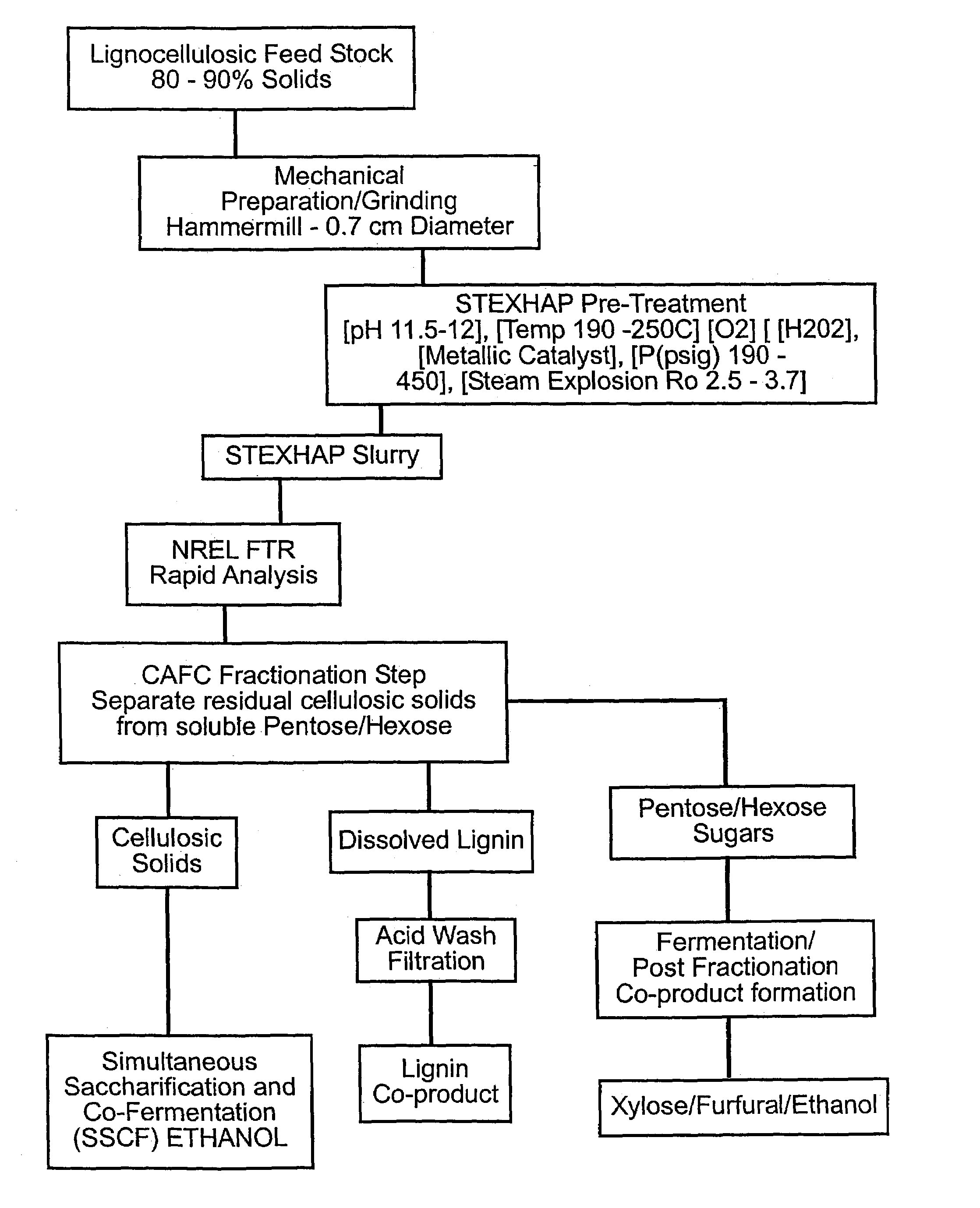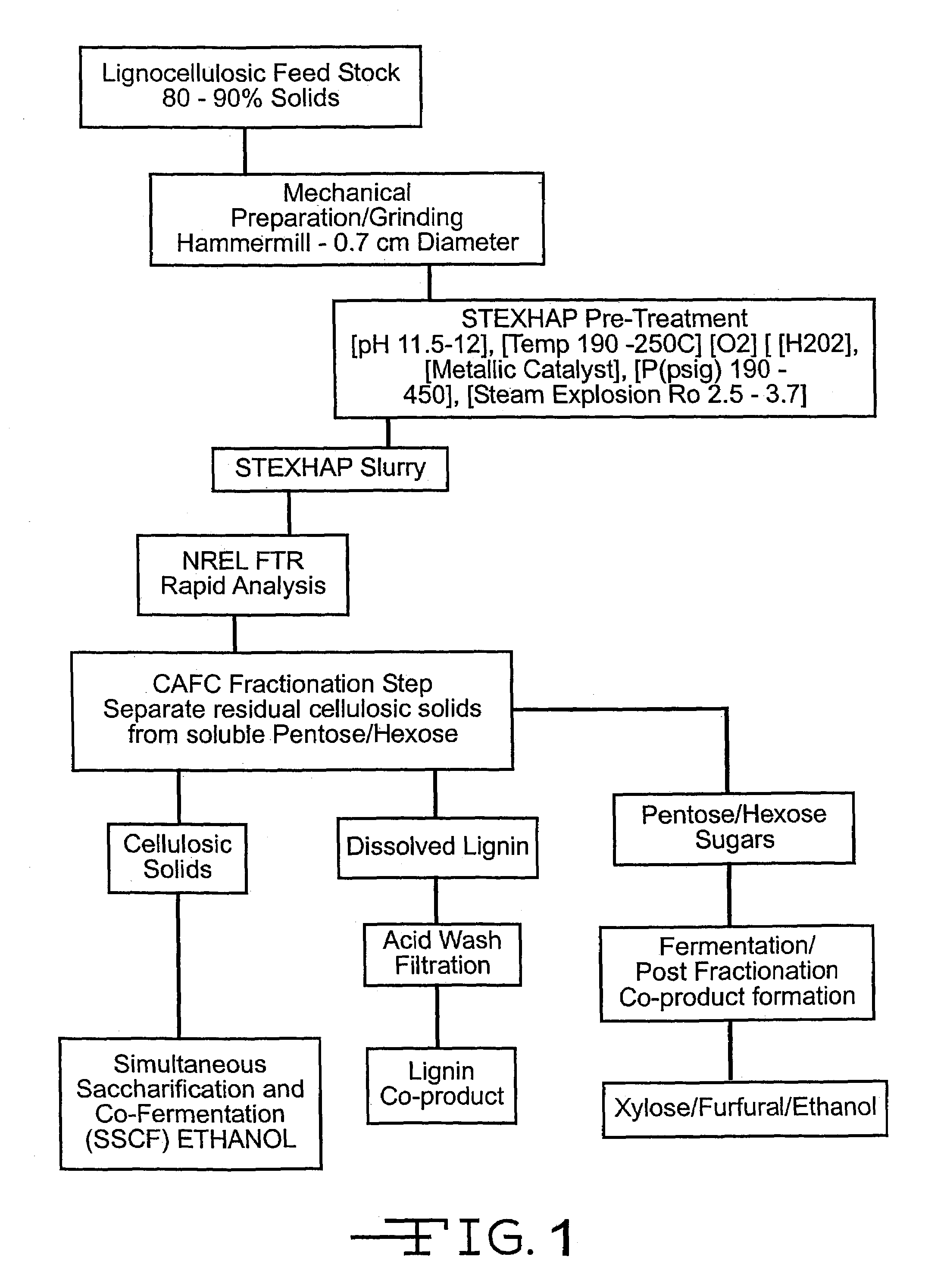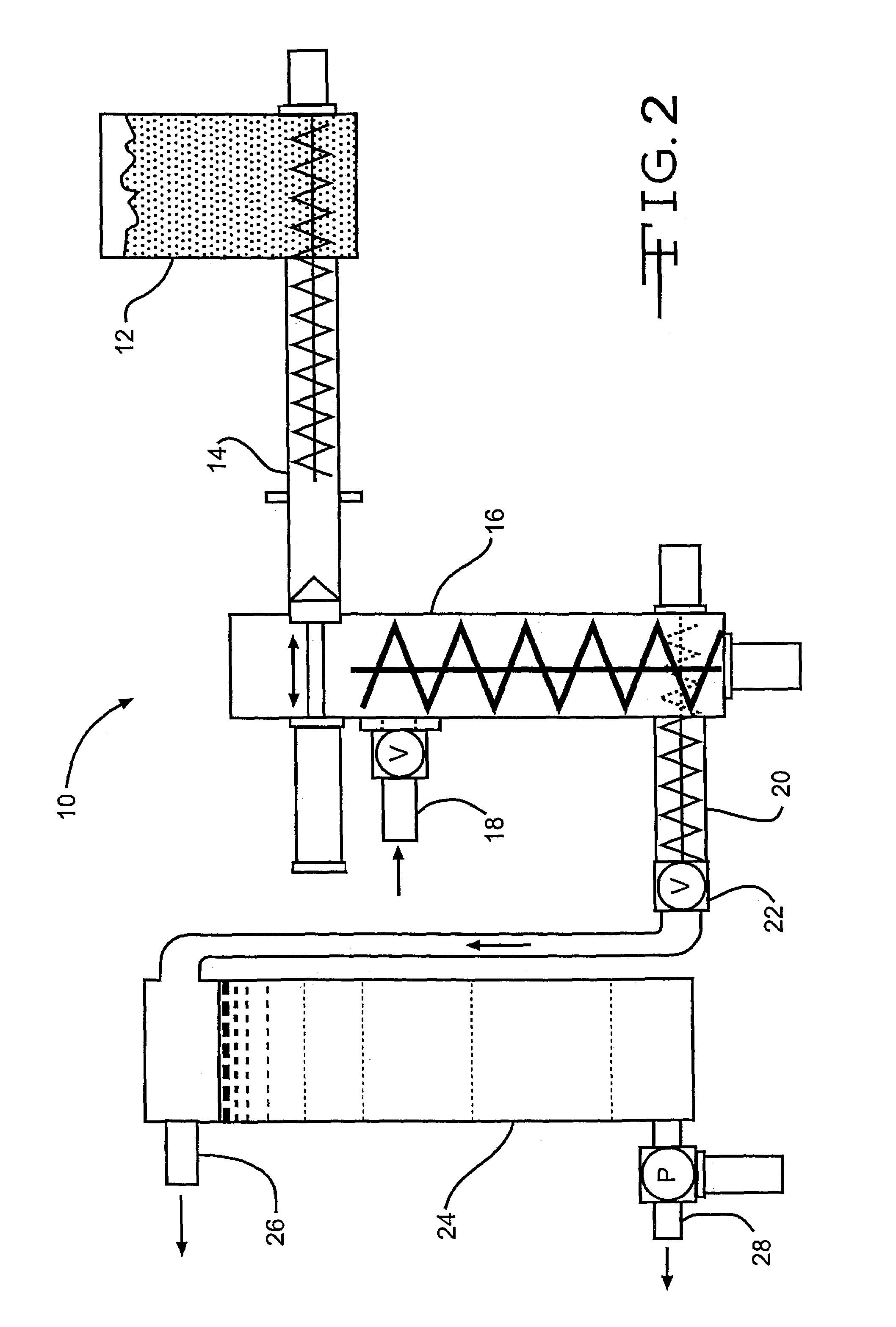Process of treating lignocellulosic material to produce bio-ethanol
- Summary
- Abstract
- Description
- Claims
- Application Information
AI Technical Summary
Benefits of technology
Problems solved by technology
Method used
Image
Examples
Embodiment Construction
[0018]This invention relates to an improved process of treating a lignocellulosic material to produce bio-ethanol. Any suitable lignocellulosic material can be used in the invention. As shown in FIG. 1, a preferred lignocellulosic feed stock contains from about 80% to about 90% solids by weight. Preferably, the lignocellulosic material is lignocellulosic biomass, such as wood chips, leaves, corn stover, straw, bagasse, rice straw, municipal cellulosic waste, and / or other known lignocellulosic biomass.
[0019]As shown in FIG. 1, preferably the lignocellulosic material is prepared for the process by mechanical grinding. Any suitable grinding equipment and process can be used. In one embodiment, the material is ground with a Hammermill to an average particle size of about 0.7 cm diameter.
[0020]The lignocellulosic material is then exposed to conditions including a pH not less than about 8, and steam at a first pressure. The alkaline pH helps to break down the lignocellulosic material with...
PUM
| Property | Measurement | Unit |
|---|---|---|
| Temperature | aaaaa | aaaaa |
| Pressure | aaaaa | aaaaa |
| Pressure | aaaaa | aaaaa |
Abstract
Description
Claims
Application Information
 Login to View More
Login to View More - R&D
- Intellectual Property
- Life Sciences
- Materials
- Tech Scout
- Unparalleled Data Quality
- Higher Quality Content
- 60% Fewer Hallucinations
Browse by: Latest US Patents, China's latest patents, Technical Efficacy Thesaurus, Application Domain, Technology Topic, Popular Technical Reports.
© 2025 PatSnap. All rights reserved.Legal|Privacy policy|Modern Slavery Act Transparency Statement|Sitemap|About US| Contact US: help@patsnap.com



